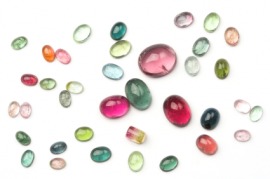What is Cabochon? (Hint: it’s NOT a town in Idaho)
Here at Joseph Schubach Jewelers, we seek to enlighten you. We want to make sure our clients are as informed as possible. Yesterday we were asked what “cabochon” meant.
Definition: A cabochon, often referred to as a cab for short, is a certain cut of stone that is very popular in numerous jewelry designs, especially those that include gemstones. A cab can be made from just about any kind of stone as well as ceramic, porcelain, or even wood. The materials doesn’t matter. The defining elements of a cabochon have more to do with the shape of the component: it is flat on one side and domed or rounded on the other side.
Cabs can come in all kinds of geometric and asymmetrical shapes, but the most important part is the flat side of a cab because that is where it will usually be secured with wire, metal, or even beads.
Source: About.com
And here are a few examples:











